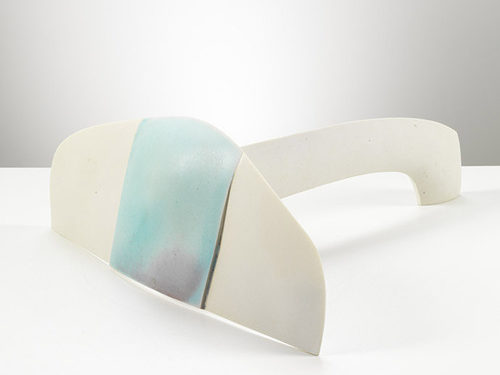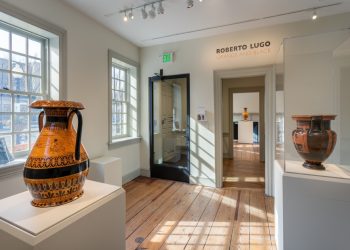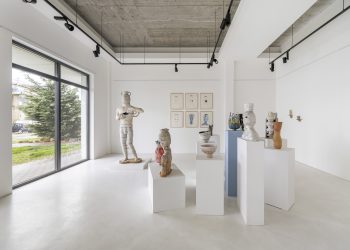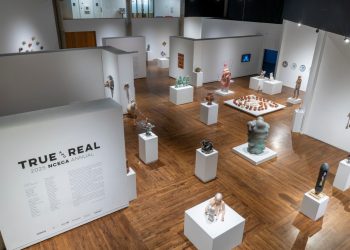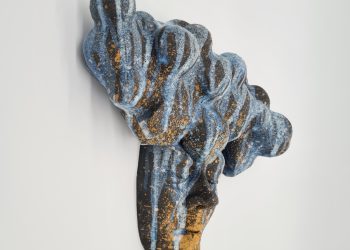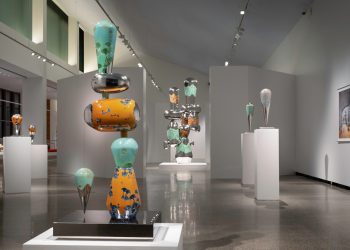
Ruth Duckworth exhibition / Erskine Hall & Coe, London
September 5 – October 4, 2012
Erskine, Hall & Coe are pleased to announce the exhibition of the celebrated contemporary sculptor, Ruth Duckworth.
The exhibition includes 22 artworks in bronze, porcelain and stoneware. The earliest dates from 1965 but the majority of pieces are from the period of late 1980s through to work completed in the final year of Duckworth’s life. The gallery has been working closely with Thea Burger, who represents the Duckworth Estate.
Writing in her essay to accompany the exhibition Thea Burger states:
“Duckworth was a modernist sculptor who loved form. She was not about colour, but was about the subtle shape of her pieces. Her forms are typically created in porcelain, stoneware, or bronze. Much admired, she has art works in most of the world’s most prestigious museums, including the Metropolitan Museum in New York, the Los Angeles Country Museum, the Victoria and Albert, the Stedelijk Museum, and the Tokyo Museum of Art.”
In Ruth Duckworth, Modernist Sculptor written by Jo Lauria and Tony Birks, Duckworth talks of her process of creating a sculpture: Ruth Duckworth Porcelain.
“Play is the essence of creativity. Creative play and gut reaction, instinct. When I work on a piece, I play. I have a whole huge section of the studio where I have an inventory of sculptural forms, simple, abstract, non-specific shapes that I find beautiful and enjoy making. Then I start building these shapes together. And when I find myself smiling, I say “hello!” I think I’ve got something. The process is intuitive, not intellectual. You have to learn to be spontaneous and trust yourself.”
Download the catalogue of the exhibition or view the catalogue online.
Ruth Duckworth
Hamburg 1919 – Chicago 2009
“Ruth Duckworth began her artistic career as a stone carver, but soon realised that she loved the medium of clay. Although she was excited by what she could create in clay, her overwhelming ambition was to make very large-scale artworks.
Duckworth was a modernist sculptor who loved form. She was not about colour, but was about the subtle shape of her pieces. Her forms are typically created in porcelain, stoneware, or bronze. Much admired, she has art works in most of the world’s most prestigious museums, including the Metropolitan Museum in New York, the Los Angeles County Museum, the Victoria and Albert, the Stedelijk Museum, and the Tokyo Museum of Art.
Duckworth had the mind and ambition of a sculptor, everything she envisioned could be enlarged. As Emmanuel Cooper commented: "Whatever the actual size of the object they all convey a sensation of massiveness and monumentality.”
Internationally known and respected, Duckworth experienced three different cultures. Born and raised in Germany for the first seventeen years of her life, she arrived in London in 1936. She wanted to be an artist but had no special training; safely landed, she learned about art and began her career. She lived and worked in England for thirty years.
She had a minimalist aesthetic and as a young artist admired the works of Brancusi, Moore, and Noguchi. Duckworth, and her fellow Europeans, Lucie Rie and Hans Coper, arrived in England imbued with the European Modernist style. Their work was considered radical, as it was.
In 1964, Duckworth was invited to go to the University of Chicago for a year. There she discovered she would be able to make a living by assembling very large-scale pieces. Unsurprisingly, she decided to settle there, fame and good fortune were to follow.
Duckworth will be remembered in the history of ceramics as someone who took her chosen material and created masterpieces. She created art works that represent her ethos, and what she thought was beautiful. In her early years many pieces were considered unacceptable by the current trends of the time. Time itself established her genius.
Today her example reminds all artists to realise the work they feel driven to create. In this, she has set an example for the young. In recognition for her artistry, she was awarded numerous gold medals, and scholarships in her name were instituted for young ceramic artists. Duckworth herself received several honorary doctorate degrees.
Duckworth stayed in the United States for decades; but England was in her heart. She returned every other year. During the year prior her death she decided to resettle in the United Kingdom. That was not to be. But her heart never left the country, which had accepted her when she and her family were at death’s door. She acknowledged her English education as the basis of her career.
Ruth Duckworth cannot return to England. The works in this exhibition represent her.“
Thea Burger
Curator, Private Dealer and Executor of the Ruth Duckworth Studio Estate.
Gallery Hours: Monday – Friday: 10 am – 6 pm, Saturday: 10 am – 6 pm (during exhibitions only).
CONTACT
mail@erskinehallcoe.com
Tel. +44 (0) 20 7491 1706
Erskine, Hall & Coe Gallery
15 Royal Arcade
28 Old Bond Street
London W1S 4SP
United Kingdom
www.erskinehallcoe.com
Above: Ruth Duckworth, Untitled, porcelain, (Inv. no. 2961091), 1991, 15.2 x 36.8 x 34.3 cm. This is a shape which Ruth loved. She created several artworks of this shape and often kept at least one of them in her personal collection. This particular piece resided in her home from 1991 until her death in 2009.


